Properties of Silicon
Silicon is a metalloid with a gray, metallic luster. It is a hard and brittle crystalline solid with a high melting point. Silicon is a semiconductor, which means it can conduct electricity under certain conditions. It is the second most abundant element in the Earth's crust, making up about 27.7% of the crust by weight.
Role of Silicon in Living Organisms
In plants, silicon plays a vital role in providing structural support and rigidity. It is a major component of the cell walls, contributing to the strength and integrity of plant tissues. Silicon also helps plants withstand environmental stresses such as drought, disease, and insect damage.
Biological Importance of Silicon
1. Structural Support: Silicon is incorporated into the cell walls of plants, contributing to their rigidity and strength.
2. Defense Mechanism: Silicon deposition in plant tissues acts as a defense mechanism against pathogens and pests.
3. Water Uptake: Silicon can enhance the plant's ability to absorb and retain water, particularly in drought conditions.
4. Environmental Stress Resistance: Silicon helps plants tolerate abiotic stresses such as high salinity and metal toxicity.
Study Tips for Understanding Silicon in Biology
- Learn about the chemical properties of silicon and how it contributes to its biological functions.
- Explore the role of silicon in plant structure and defense mechanisms.
- Study the impact of silicon on plant growth and development under different environmental conditions.
- Understand the significance of silicon in biogeochemical cycles and its availability to living organisms.
- Explore research articles and case studies on the effects of silicon on crop productivity and stress tolerance.
Key Concepts about Silicon
1. Chemical Element: Silicon is a chemical element with the symbol Si and atomic number 14.
2. Abundance: It is the second most abundant element in the Earth's crust.
3. Biological Role: Silicon provides structural support and defense mechanisms in plants.
4. Environmental Impact: Understanding silicon's role in plant resilience can have implications for agriculture and environmental management.
[Silicon] Related Worksheets and Study Guides:
.◂Biology Worksheets and Study Guides High School. Nucleic acids and protein synthesis
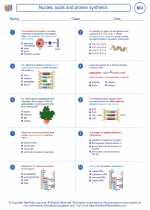
 Worksheet/Answer key
Worksheet/Answer key
 Worksheet/Answer key
Worksheet/Answer key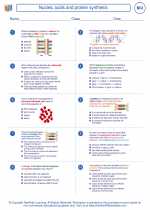
 Worksheet/Answer key
Worksheet/Answer key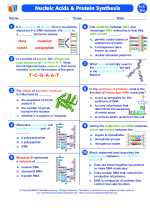
 Vocabulary/Answer key
Vocabulary/Answer key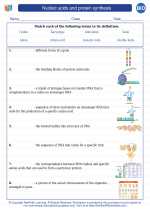
 Vocabulary/Answer key
Vocabulary/Answer key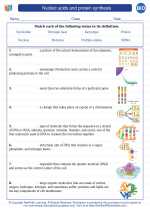
 Vocabulary/Answer key
Vocabulary/Answer key
